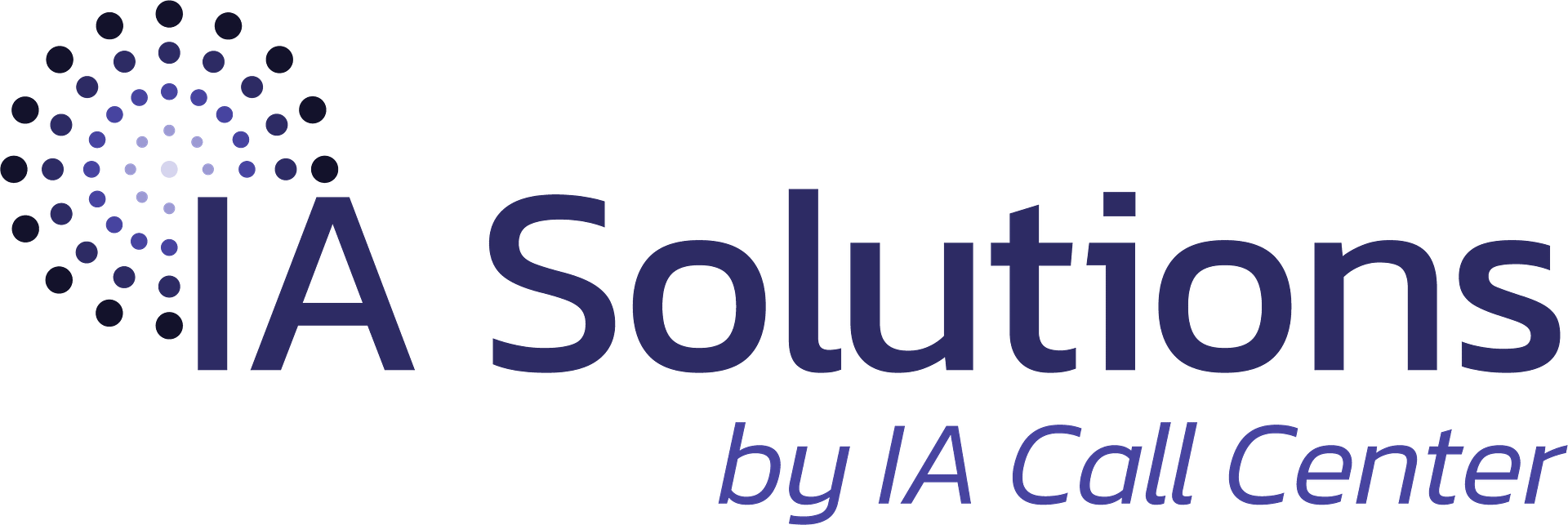(Note – This is the first of a ten-part series of posts on Empowering Your Customer Service Agents to Personalize Customer Journeys. We will release these posts weekly. So, please sign up for notifications to stay informed when new posts are released.)

These days, competition for customers is more fierce than ever. As a result, companies are looking for any advantage they can find to attract and keep customers.
One of the surest ways to help your business continue to grow is to provide your customers with the best experiences and journeys possible. Each customer’s journey is a complete and comprehensive experience that includes all interactions they have with your company, from an initial awareness of your products or brand to after-the-sale engagement.
One of the most effective approaches to create better experiences for your customers is by enabling your agents or representatives to personalize your customers’ journeys.
By providing your customer service team with the right tools, resources, and training needed to understand and connect with customers, your company can create more meaningful and impactful interactions that foster customer loyalty and drive sales. However, to do this, you must first define a few goals.
Why Defining Goals is Important
In empowering your agents to better represent your business by personalizing customer journeys, it’s absolutely essential that you define clear and measurable goals. Therefore, having a clear-cut, defined set of objectives will allow you to track progress, measure success, and make any necessary adjustments along the way.
Defining goals beforehand also ensures that your efforts better align with the overall strategy and objectives needed to deliver positive results. Knowing what your goals are also helps ensure resources are directed toward initiatives that will have the greatest impact and measure of success.
When defining goals for the personalizing customer journeys, it’s important that they are:
- Specific: Your goals all clearly state what is to be achieved or what the desired result is;
- Measurable: Your goals include measurable indicators to track progress;
- Actionable: Your goals include clear direction on the steps needed to achieve them;
- Realistic: Your goals are something that can actually be achieved;
- Time Bound: Your goals include a reasonably aggressive deadline to achieve them.
If you adhere to these principles, you’ll be able to create goals that are focused, actionable and achievable.

Some Goals to Consider
As mentioned above, it’s important to set goals before setting out to enable your customer service agents to provide better, more personalized service. When first considering some of those goals, though, determining which ones are attainable or possible can seem a little daunting. Not to mention that even knowing what some of those goals should be can be difficult. Therefore, with that in mind, here is a list of some common goals you might want to consider before performing a major overhaul on your customer service operations.
Increase Customer Satisfaction
According to a large-scale study by American Express, over 80% of respondents said that they would stop (or have stopped) doing business with a company because of poor customer service. Therefore, one of your primary goals for looking to enable agents to personalize customer journeys should be to increase overall customer satisfaction.
Attaining this goal will require providing agents with the training and resources needed to better understand customer needs and their pain points. To this end, your company should conduct agent training that focuses on customers’ pain points, and then help agents use this information to better tailor their interactions.
Improve Customer Retention
The best company leaders understand that keeping your current customers happy is a lot more profitable (and cheaper) that finding new ones. In fact, a study from Invesp shows that increasing customer retention by only 5% can increase profits by anywhere from 25% to 95%.
Reaching this goal means enabling agents to identify and address the root causes of customer churn and dissatisfaction. To do this, try implementing programs and incentives that reward top-performing agents that help keep your customers happy. Instruct and train your agents on how to address and handle customer retention, as well as provide incentives and rewards for agents who meet retention targets.
Enhance The Customer Experience
Better customer journeys equal better overall customer experiences, which ultimately should be the goal of any company that wants to succeed. In a study from Forrester, customers revealed when they have a positive experience with a company, they are much more likely to make repeat purchases and recommend that business to others.
To achieve this, some companies choose to invest in technologies that enable agents to personalize interactions, such as AI-powered chatbots and other similar customer service platforms (which are forward-thinking approaches, for sure). By encouraging your agents to take a more proactive and empathetic approach to customer interactions, they can improve customer experiences. And by providing thoughtful training on active listening and empathy, you can offer your agents a leg up in realizing personalized journeys for your customers.

Increase Sales
If you’re like most company executives, the most important reason for doing just about anything is to increase sales. And that’s not a bad thing, of course, as revenue keeps everything humming along. Salesforce conducted a study that shows that when companies prioritize customer experiences, they have a 1.5x higher chance of reaching sales and revenue targets.
Personalizing customer journeys means better customer service and experiences, which can help increase sales. Of course, this takes some work, but it can be done. A great way to start is by teaching agents to identify cross-selling and upselling opportunities, and then provide them with the training and tools needed to capitalize on those opportunities.
Enhance Self-Service Options
These days, more customers are looking for options to help themselves when seeking answers and support. In fact, in a study by Accenture, 80% of those customers who took part said they prefer to use self-service options for simple queries.
Not only are self-service options great for customers who prefer them, they’re also fantastic in helping to shorten queues, reduce hold/wait times, and free up other CX resources. Providing easy-to-use tools that help your agents guide and direct customers to self-service options reduces the volume of customer service interactions and increases customer satisfaction.
Investing in self-service options, such as chatbots, FAQs, and online knowledge bases, can have positive effects on customer service, as well as provide considerable cost savings.
Increase Customer Loyalty
Customer loyalty is essential for repeat business and one of the biggest (if not the biggest) drivers of growth over the long term. For instance, a study by Marketing Metrics reveals the probability of selling to a new customer is only 5 to 20%, while the probability of selling to an existing customer is upwards of 70%. These types of numbers result directly from customer loyalty.
By enabling your agents to build stronger, more meaningful relationships with your customers (through personalized interactions and implementing loyalty programs) repeat sales become the norm instead of the exception. The quickest way to achieve this goal is to conduct agent training on building customer relationships, and then provide agents with tools they need to deliver on those improved relationships.
Improve First Contact Resolution
A Gartner study recently found that 92% of customers will return to a business after an unpleasant experience – if their problem is resolved quickly. Therefore, quickly resolving customer issues and problems should always be a top priority. And if possible, your agents should be able to resolve issues the very first time a customer reaches out to your call center or support team. When this is achieved, it’s called a first contact resolution (FCR).
First contact resolution is an extremely important metric and one that you should strive to improve upon always. A good start to achieving high FCR numbers is to provide agents with relevant training and resources to effectively handle customer issues quickly. Another avenue is to implement a system for tracking and analyzing customer service interactions. There are many ways to improve first contact resolution levels, but it’s important to set realistic goals and standards before attempting to do so.
One of the most effective ways to achieving high first contact resolution numbers is empowering your agents with the tools, information, and autonomy needed to personalize and address each customer interaction individually.
Reduce Wait Time
Research by Zendesk shows that when customers call customer service, the average wait time is 12 minutes. However, many other studies show that customers who have to hold or wait more than a minute or two say that they will find other vendors or suppliers if they have a choice. Of course, this means that you need to reduce hold or wait times as much as possible – if you want to keep your customers.
Tools that enable agents to personalize customer experiences and journeys also help save time in assisting customers quickly and efficiently; specifically, implementing tools for managing customer service interactions and prioritizing customer needs. Providing agent training on time management is also an excellent step toward the goal of reducing customer hold/wait times.
Improve Agent Productivity
McKinsey did a study on customer service and found that companies that use automation in their call center/customer service operations normally see a 30% increase in agent productivity. Tools that enable agents to personalize customer journeys typically include automation tools that help representatives retrieve customer data and information quickly, which streamlines and hastens interactions – without making them feel impersonal, robotic, or cold in nature.
There are many moving pieces in the quest to improve agent productivity. Of course, better software and hardware tools play a major part, but training and policies are important as well. And more and more, these days, AI is playing an increasingly important role in helping call center/customer service agents get more done with less while still providing excellent, personalized levels of customer care.

Reduce Customer Complaints
If left unchecked, customer complaints can wreak havoc on your company. A study from New Voice Media tells us that approximately 20% of customers will stop doing business with a company after just one negative experience. And if that weren’t bad enough, those same customers will probably tell at least two or three others about their bad experience(s), which could result in a potential loss of future sales and a loss of reputation.
Of course, every business will have problems with products or services (perfection is a goal, not a reality.) Nevertheless, how a company responds to problems and complaints ultimately determines how well they can bounce back and keep customers from running to their competitors.
When you enable your agents to personalize customer journeys by providing them with the tools and autonomy to make complaining customers happy, they can save problem relationships and turn angry customers into brand advocates. Doing this is not easy, of course, but with the right training (and support from management), agents have a much better chance of turning angry customers into happy ones.
Improve Customer Sentiment
Studies by Medallia and others have found that companies with high levels of customer sentiment see more than a 30% increase in referrals from current customers. Therefore, engaging your customers on a more personal level can help turn them in to ambassadors for your brand who drive those profitable referrals.
One way to improve customer sentiment is by helping your agents build stronger, more meaningful relationships with customers through personalized interactions. Training on improving customers interactions, as well systems for tracking and analyzing customer sentiment, can help you make considerable progress in attaining this goal.
Increase Efficiency of Customer Service Interactions
According to many CX industry sources, over 40% of customers expect a customer service agent to respond within 5 minutes. Consequently, one of your primary customer service goals should be to make your operations as efficient as possible to prevent long wait or queue times for your customers. Investing in technology that helps to streamline interactions and prioritize customer needs, as well as agent training on time management, can help in this regard.
Improve Agent Satisfaction
Happy CX or call center agents make for happy customers, at least according to the experts (and we agree). In fact, research by MetricNet shows that companies with high levels of agent satisfaction see at least a 20% increase in customer satisfaction. So, since making your agents happier results in happier customers, this should absolutely be a priority.
Providing your agents with the tools needed to make their jobs easier and more efficient is a great place to start. Also, giving agents the authority and autonomy they need to please your customers will not only result in better customer experiences, but reduce stress and negative interactions for your agents as well.
Just a Start
The goals mentioned above are but a few you might consider before embarking on the journey to better personalize customer experiences; there are certainly many more. Nevertheless, these should give you an idea of where to start your discussions and planning – if you really want to empower your agents to personalize customer journeys.
Regardless of the goals you choose to pursue, though, make sure they are well defined and attainable within a reasonable time frame. Of course, setting long-range goals can be helpful, but focusing on more immediate goals and concerns can help you improve the most important aspects of your customer service operations in time to help drive growth and improvements in the near to mid-term – where it usually matters most.
Conclusion
If you want your business to thrive in today’s competitive landscape, creating exceptional customer experiences is essential to differentiating yourself from the competition and driving growth. As we’ve discussed above, one effective way to do this is by empowering your agents to personalize customer journeys. By setting clearly defined goals, and providing agents with the tools, resources and training they need to do their jobs more effectively, your company can create more meaningful and impactful interactions that foster customer loyalty and drive sales.
Just remember that when considering these goals, it’s crucial to define ones that are clear and measurable. Additionally, your goals should always align with the overall strategy and objectives of your company and should be specific, actionable, and time-bound. Doing this will help ensure that your efforts are focused and achievable.
In the next post of our Empowering Agents to Personalize the Customer Journey series, we will discuss providing customers choices using omnichannel tools. If you want to find out more about how omnichannel tools can help your company better personalize customer experiences, be sure to check back a few days after this post.

















